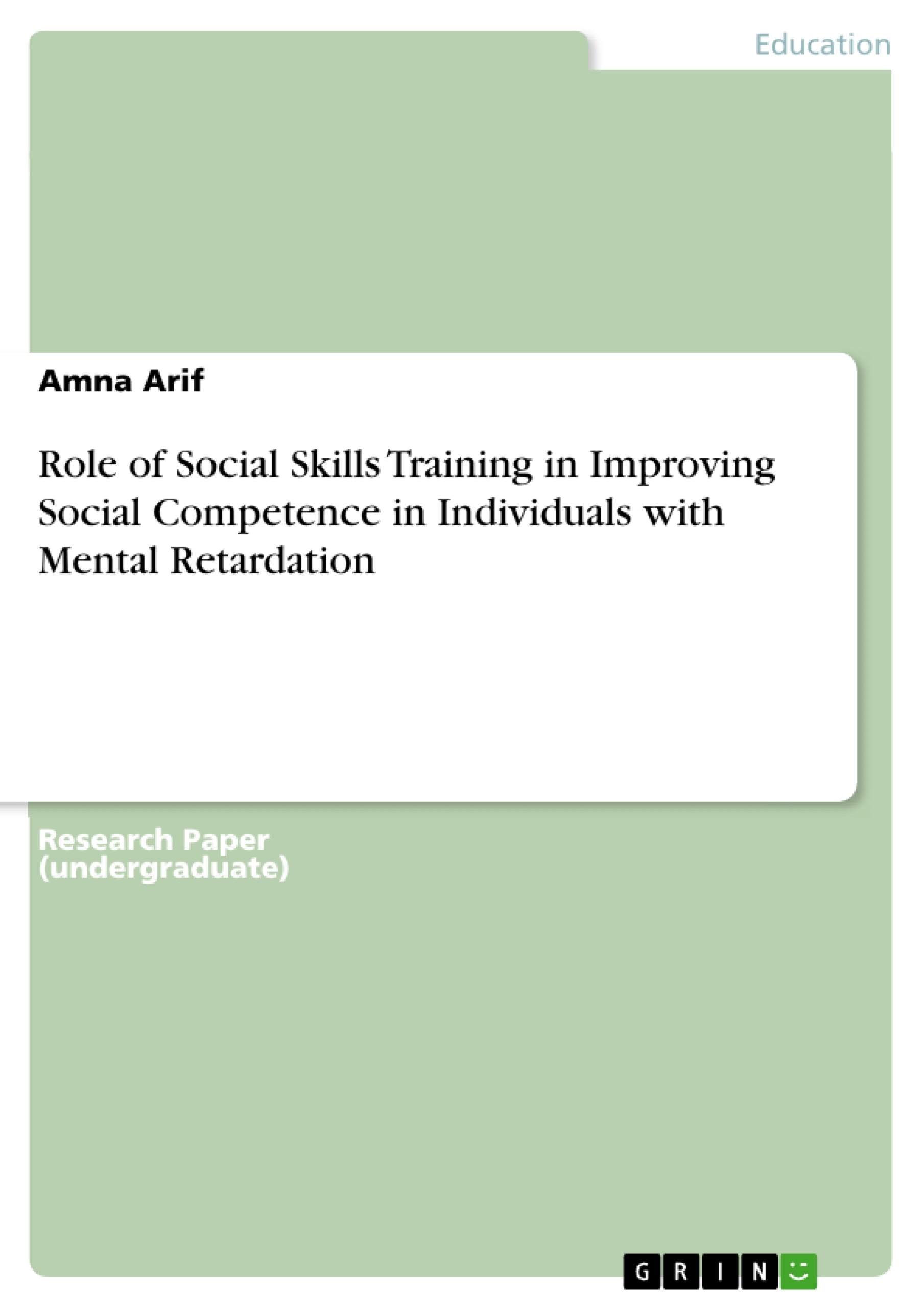The social competence is very important to survive successfully in society. Everybody needs to be socially competent for living a better life in society, having good relationships and interactions with others. Researchers have concluded that deficits in social competence can affect later success in life. Social competence has frequently been cited as a critical component of life adjustment (e.g., Epstein & Cullinan, 1987; Neel, 1988). In particular, the importance of social competence and related personality features has been stressed for individuals who have mental retardation or other developmental disabilities (e.g., Balla & Zigler, 1979). As a consequence, social skills instruction has increasingly been recognized as a key component to be included in intervention programs for students who are mildly mentally retarded. (Gable. A.R & Warren. F.S., 1993).
The American Association on Mental Retardation (2002), defines mental retardation as “Mental retardation is disability characterized by significant limitation both in intellectual functioning and in adaptive behavior as expressed in conceptual, social and practical adaptive skills. This disability originates before age 18”. (p.1). Social skills are specific behaviors that facilitate interpersonal interactions and maintain a degree of independence in daily functioning. Social competence involves the use of those skills at the right times and places, showing social perception, cognition, and judgment of how to act in a particular situation and how to adjust one’s behavior to meet different situations (Greenspan, 1979, 1990; Kerr & Nelson, 1989; Sargent, 1989).
Inhaltsverzeichnis (Table of Contents)
- Role of Social Skills Training in Improving Social Competence in Individuals with Mental Retardation
- Components of Social Competence
- Social skills knowledge
- The child's relationships with others
- Accurate age appropriate social cognition
- The absence of maladaptive behaviors
- Sociobehavioral Deficits in mild mental retardation
- Causes of Deficits in Social Competence
- Social skills training in improving social competence
Zielsetzung und Themenschwerpunkte (Objectives and Key Themes)
This paper examines the role of social skills training in improving social competence among individuals with mental retardation. It explores the components of social competence, the sociobehavioral deficits commonly observed in individuals with mild mental retardation, and the potential causes of these deficits. The paper also discusses the significance of social skills training in promoting positive social interactions and enhancing overall social competence.
- Importance of social competence for individuals with mental retardation
- Components of social competence and their relevance to intervention strategies
- Causes of deficits in social competence among individuals with mental retardation
- Role of social skills training in improving social competence
- Social skills as essential components of behavior and their impact on social relationships
Zusammenfassung der Kapitel (Chapter Summaries)
The paper begins by defining social competence and highlighting its crucial role in successful social interactions. It discusses the historical perspective of social competence research, emphasizing the "deficit model" that attributed social acceptance issues to a lack of specific social skills. The paper then delves into the four interdependent factors identified by Vaughn and associates that contribute to social competence: social skills knowledge, relationships with others, accurate social cognition, and the absence of maladaptive behaviors.
The paper explores sociobehavioral deficits in individuals with mild mental retardation, referencing Greenspan's model of social competence and its two sub-constructs: intellectual aspects (including practical and social intelligence) and personality aspects (focusing on temperament and character). It examines potential causes of deficits in social competence, including the "primary cause" hypothesis, which attributes these deficits to underlying neurological or cognitive dysfunctions, and the "secondary cause" hypothesis, which suggests that cognitive difficulties lead to achievement deficits, ultimately impacting social skills development.
The paper concludes with an emphasis on the importance of socialization in preparing individuals with mental retardation for social life, highlighting social skills that educators should focus on, such as self-control, listening, and conflict management. It emphasizes that social skills are distinct from behavior, serving as components that contribute to social understanding and adaptation in various settings.
Schlüsselwörter (Keywords)
This paper examines the role of social skills training in enhancing social competence in individuals with mental retardation. Key themes include social competence, social skills deficits, social skills training, socialization, and the impact of these factors on successful integration into social environments.
- Citation du texte
- Amna Arif (Auteur), 2010, Role of Social Skills Training in Improving Social Competence in Individuals with Mental Retardation, Munich, GRIN Verlag, https://www.grin.com/document/179783



